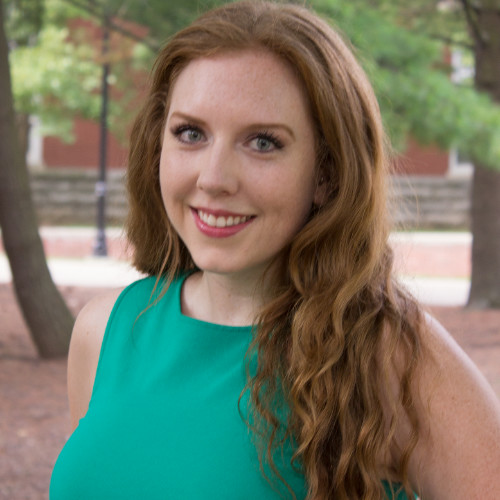
Micki Olson is a senior researcher at the College of Emergency Preparedness, Homeland Security, and Cybersecurity at the University at Albany. She specializes in risk communication, helping to ensure that emergency messages are clear, actionable, and accessible to all. ESAL sat down with Micki to discuss her career path, the challenges of risk communication, and the future of the field.
This interview has been edited for clarity and length.
TK: How did you get your start as a risk communication researcher?
Olson: I've always been fascinated by people and their behaviors. As an undergraduate, I took social science courses to better understand how people think and act. That’s when I became interested in how people make decisions about their health. Initially, my research answered questions like: How do you convince someone to change their behavior now to prevent a consequence that may not occur for decades? For example, how do you convince a smoker to quit to avoid cancer years down the line?
Over time, my curiosity expanded to decision-making in high-stakes, high-stress situations. I realized that communication—especially messaging—can help people navigate crises and emergencies, or it can hinder them. I believe the public has a right to risk and crisis information in a way they can understand. The way information is presented can be the difference between life and death.
TK: What have you learned about effective crisis communication?
Olson: Decades of research have identified key pieces of information people need in times of imminent threats. The work of Dennis Mileti, for example, showed that effective warning messages should answer five questions:
Yet, our research found that most emergency alerts don’t include all five elements. For example, we conducted a content analysis of the last decade of wireless emergency alerts and found that only 10% contained this critical information.
At the University at Albany, under the leadership of Dr. Jeannette Sutton, we developed a software tool to help emergency managers create effective warning messaging. It is called the Message Design Dashboard and guides them step by step to ensure their messages are complete.
Another challenge is that experts often use jargon-heavy, overly technical language, which can confuse rather than help. I’ve conducted focus groups and experiments that reinforce that messages must be both complete and accessible—written in plain language that everyone can understand.
TK: Do crisis messages need to be tailored for different audiences?
Olson: Ideally, yes, but in an emergency, there often isn’t time. Emergency messages like Wireless Emergency Alerts that you get on your cellphone must be understandable to everyone, regardless of language, literacy level, or background. The only commonality might be geography, so messages need to be clear and direct for a broad audience.
Additionally, relying on a single communication channel isn’t effective. We need a multi-platform approach—social media, television, wireless emergency alerts—so that information reaches as many people as possible.
TK: Your work seems to balance both proactive and reactive elements. Can you elaborate?

Olson: Absolutely. Some of our work is proactive—developing recommendations for organizations like the National Weather Service before a disaster occurs. For example, I am currently working on messaging strategies for extreme heat events.
Other aspects of our work are reactive—we analyze messages sent during real emergencies and assess their effectiveness. By identifying gaps and concerns, we can improve future messaging strategies.
TK: How do you collaborate with meteorologists, public health experts, and emergency managers?
Olson: I see myself as a translator between these fields and the public. Each field has its own assumptions and specialized language, which can create communication barriers. My role is to bridge those gaps—understanding their priorities and constraints, then tailoring recommendations to enhance their messaging.
For example, meteorologists provide the science behind severe weather warnings, but technical forecasts don’t always translate well into public understanding. I help refine their messaging to make it clearer and more actionable. Similarly, emergency managers are responsible for disseminating messages, so we work with them to integrate social science principles into their communications.
TK: Can you tell us more about the software tool your team developed?
Olson: It’s called the Message Design Dashboard, funded by FEMA’s Integrated Public Alert and Warning System. Organizations can use it to simplify the process of creating effective warning messages. The dashboard walks emergency managers through the key components of a message, ensuring they include all critical details.
It works like a structured template—users enter their organization’s name, select the hazard, and provide details like location and timing. The system then generates a complete, plain-language message that meets best practices. It removes the guesswork, making it easier for emergency managers to send effective alerts, especially when time and resources are limited.
TK: How can local governments improve their risk communication?
Olson: Local governments play a crucial role in public safety, but they need the right policies and resources in place. They should consider:
Proactively translating emergency templates into multiple languages and building community trust before a crisis occurs can make a big difference.
TK: What advice do you have for people who want to contribute to better risk communication in their communities?
Olson:
Public trust is not automatic—it must be earned through clear, transparent, and empathetic communication.
ESAL: What trends do you see shaping risk communication in the next 5–10 years?
Olson:
ESAL: Can you share an example where communication made a real difference?
Olson: While we can’t always pinpoint a single message as the reason for better outcomes, we do know that effective communication saves lives. One key lesson is that even when officials don’t have all the answers, acknowledging the situation and providing updates can help calm public fears. Silence creates uncertainty—communication, even if incomplete at the time, is often better than no communication at all.
Do you have a story to tell about your own local engagement or of someone you know? Please submit your idea here , and we will help you develop and share your story for our series.